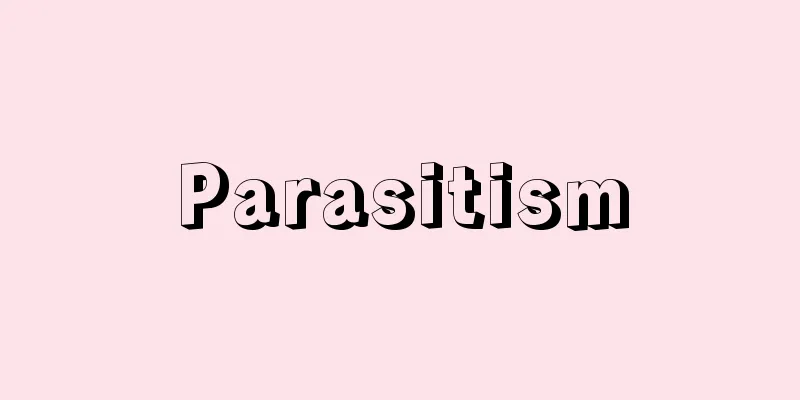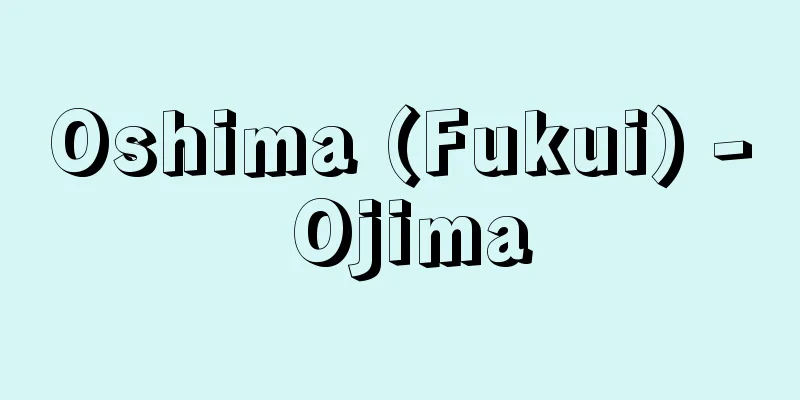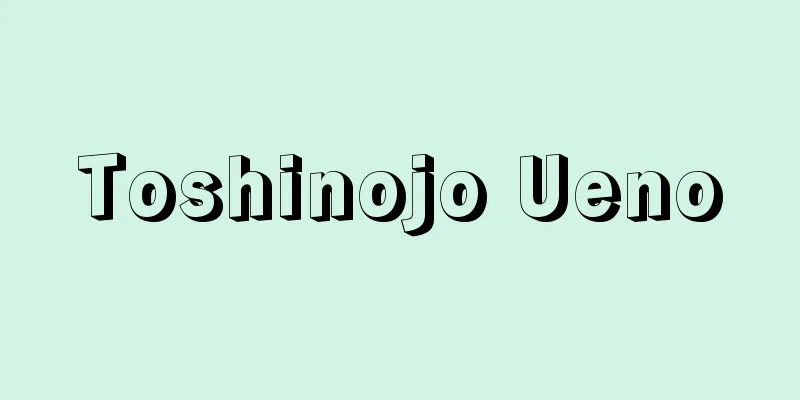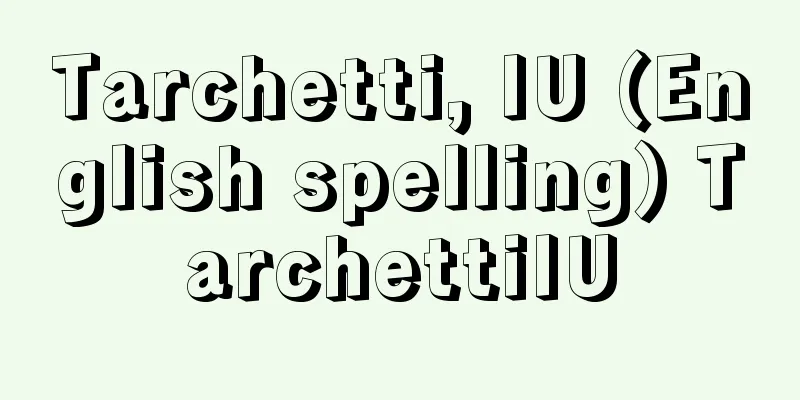Parasitism

|
It refers to an organism that lives inside or on the surface of another organism and depends mainly on that organism for nutrition. A parasitic organism is called a parasite or parasite, and an organism that is parasitized is called a host or host. It is a form of symbiosis, but it is different from mutualism, in which both organisms benefit, and commensalism, in which only one organism benefits, in that the host is more or less adversely affected. Damage caused by parasites includes mechanical damage such as tissue destruction and clogging of the intestines, oral cavity, and nasal cavity, chemical damage caused by substances released by the parasite that have a harmful effect on the host, and damage caused by allergic reactions of the host. The degree of damage varies depending on the type of parasite, the number of individuals, and individual differences, and can sometimes cause the death of the host. However, parasitism is essentially a lifestyle in which the organism uses the host alive, and is different from predation and other such methods. Parasitic wasps that parasitize insects, such as the blue-winged wasp that parasitizes the larvae of the cabbage white butterfly, ultimately consume the host, and are therefore specifically referred to as predatory parasitism. In this case too, the host survives until the parasite completes its development, and the death of the host is secondary. Parasitism is primarily the direct absorption of nutrients from the host, but some animals live by relying on the labor of their hosts, and are referred to as social or worker parasitism. There are also phenomena of secondary and tertiary parasitism, where a parasite parasitises another parasite, such as the chestnut gall wasp, A. punctatus, which parasitises chestnuts and creates galls. Some animals require two or more different hosts depending on their developmental stages, in which case the host that the adults parasitise is called the definitive host, and the host that the larvae parasitise is called the intermediate host. The relationship between parasitism and a host is basically a phenomenon seen between living organisms, but sometimes it also includes the intake of nutrients from the host's corpse or excrement, and the latter is called necrositism (saprophytic) and the former is called animate parasitism. Furthermore, some people broadly interpret that all herbivores are parasitic on plants, carnivores on other animals, and plants on sunlight, but this idea is clearly going too far. [Kondo Takaki] ParasitesMost parasitic animals belong to four divisions: Protozoa, Flatworms, Pouches, and Arthropods. In general, they have hooks, claws, and suckers that allow them to attach to their hosts, but their sensory, motor, and digestive organs tend to degenerate or disappear. They are also prolific and many of them have highly developed reproductive organs. Parasitic animals can be divided into internal parasites, which invade the body and parasitize, and external parasites, which attach to the surface of the host's body and parasitize. Many internal parasites parasitize humans and livestock, causing illness in the host. The main parasites that parasitize the human body are roundworms, lung flukes, liver flukes, hookworms, tapeworms, and Schistosoma japonicum, and many others have intermediate hosts. Some, such as the malaria parasite, have humans as intermediate hosts and mosquitoes as definitive hosts. External parasites include fleas, lice, and mites, which are temporary parasites, and some that spend their entire lives parasitizing. Some male animals parasitize females of the same species, and are called parasitic males. In the bonellid worm and a type of anglerfish, males attach to the abdomen of the female, but in these males, most parts except for the testes have degenerated, and their bodies are only a tenth of the size of the female. Social parasitism includes kleptoparasitism or trophoparasitism, where the host steals food collected by the host, and slavery, where the host is used as a slave. Kleptoparasitism includes species such as the skua, which can catch fish by itself but steals food from other seabirds, and species such as the Brazilian spiny-horned wasp, which cannot collect nectar or pollen from flowers by itself and so invades bee nests to steal food. Kleptoparasitism also includes brood parasitism, where other birds raise their young, such as the lesser cuckoo and the common cuckoo. In Japan, the samurai ant is famous for its slavery. Worker ants of the samurai ant form a line and attack the nests of the black mountain ant, stealing eggs, larvae, and pupae and carrying them to their own nests. Worker ants of the black mountain ant that emerge from the nests of the samurai ant expand the samurai ant nest and collect food. Samurai ant worker ants never leave the nest except to hunt slaves. [Kondo Takaki] Parasitic plantsWhen we look at plants, even among seed plants, where photosynthesis and autotrophy are the norm, there are some oddballs that practice parasitic nutrition. These are called parasitic plants or living parasites, and together with nematode parasitic (saprophytic) plants, they make up the heterotrophic plant group. In the past, parasitic fungi were sometimes included in the category of parasitic plants, but now fungi are considered to be an independent kingdom of life (kingdom of Fungi). If we divide parasitic plants based on their method of nutrition, there are hemiparasitic ones, which are mixotrophs that also carry out photosynthesis but obtain water and inorganic salts from the host, and holoparasitic ones, which have no chlorophyll and depend entirely on the host for nutrients. It is interesting to note that parasitic plants are concentrated in certain taxonomic groups among seed plants in terms of their relatedness. Semi-parasitic plants include Viscum album of the Viscaceae family (the main hosts are branches of Chinese hackberry, cherry, Mongolian oak, and beech), Viscum gracilis (branches of chestnut and oak), Euonymus japonica of the Santalaceae family (roots of various trees), Cannabis sativa (roots of herbs in sunny areas), Euonymus nigricans of the Scrophulariaceae family (roots of grass herbs), and Euonymus platyphylla (roots of hazel). Homoparasitic plants include dodder (mugwort, cabbage stems, and sumac branches) of the Convolvulaceae family, mamedaoshi (soybean, mugwort, and water buckthorn stems) of the Mikan family, mirage (chestnut roots) of the Mikan family, cypress (Japanese cypress roots) of the Balsaminaceae family, broomrape (artemisonia arbutifolia roots) of the Bambungaceae family, oniku (mountain alder roots), nanban seisuru (Japanese silver grass, sugar cane, and ginger roots), and mountain broomrape (hornbeam, birch, and chestnut roots). Evergreen mistletoe is found on trees in the mountains and fields, where it penetrates its parasitic roots into the conductive tissues of the host to absorb moisture and minerals. It is dioecious, flowers from February to March, and bears pale yellow spherical fruits. Cuscuta gracilis, which entangles herbaceous plants in riverbeds and roadsides, inserts its adventitious roots into the host and grows vigorously, often causing the host to wither. In this case, the 2 mm scale-like leaves are not functional. Parasitic plants that attach to roots vary in the degree of dependence on the host. Tsukubane and Kogomegusa have green leaves and at first glance look no different from normal plants. However, their roots are poorly developed, with some roots attaching to the host's roots to obtain nutrients. Mamacona can grow without parasitism, but its growth is still significantly inferior. On the other hand, total parasitic species such as Mimosa are severely parasitised, their organs degenerate significantly, and their shapes and colors are quite unique. Parasitic plants also select hosts, but the combination of the two is thought to be related to the physiological conditions of the cells and the presence or absence of chemicals they require. The hydrogen ion concentration (pH) and sugar content of the host's cell fluid are involved in the relationship between the Cuscuta genus and its host legumes, and species with low values do not allow the parasite to invade. Seeds of parasitic plants that attach to roots only germinate near the roots of the host, and secretions from the roots promote germination. The seeds of witchweeds (tropical, Scrophulariaceae), which are harmful to cotton and corn, are activated by a substance called strigol from cotton roots. The biological damage that parasitic plants cause to their hosts is not fatal, except in some cases. However, mistletoe and dodder are also considered to be damaging parasitic seed plants in agriculture and forestry. The naturalized plant, American dodder, has also spread widely in recent years to the point of causing damage to crops. [Nori Saito] It parasitizes on trees such as beech, zelkova, and Mizunara. It branches out a lot and becomes a sphere with a diameter of 40 to 60 cm. It is a "semi-parasitic plant" that takes root in the host's branches and absorbs nutrients while also performing photosynthesis. ©Shogakukan Photo by Okuyama Hisashi "> Mistletoe Source: Shogakukan Encyclopedia Nipponica About Encyclopedia Nipponica Information | Legend |
|
ある生物がほかの生物の体内または体表を生息場所とし、おもに栄養面においてその生物に依存して生活することをいう。寄生する生物を寄生生物または寄生者、寄生される生物を宿主(しゅくしゅ)または寄主(きしゅ)という。共生の一形態であるが、両方が利益を受け合う相利共生や、一方だけが利益を受ける片利共生とは、宿主が多少とも有害な影響を受ける点で区別される。寄生者による障害としては、組織が破壊されたり、各種の腸、口腔(こうこう)、鼻腔などを詰まらせたりする器械的障害のほか、寄生者がなんらかの物質を出して宿主に有害な作用を与える化学的障害、宿主のアレルギー反応による障害がある。障害の程度は、寄生生物の種類、個体数、個体差などによって異なり、ときに宿主の死を招くことがある。しかし、寄生は原則的に宿主を生かしたまま利用する生活様式であり、捕食などとは異なる。モンシロチョウの幼虫に寄生するアオムシサムライコマユバチなど昆虫に寄生する寄生バチでは、最終的に宿主を食べ尽くしてしまうため、とくに捕食寄生とよぶ。この場合も、寄生者が発育を完了するまで宿主は生存し、宿主の死亡は二次的なものである。寄生はおもに宿主の栄養を直接吸収するものであるが、動物のなかには宿主の労働に依存して生活するものがあり、それを社会寄生または労働寄生とよぶ。 クリに寄生して虫こぶをつくるクリタマバチに、クリタマヒメナガコバチが寄生するというように、寄生生物にさらに寄生する二次寄生、三次寄生の現象もある。また、動物のなかには、その発生段階に応じて2種以上の異なる宿主を必要とするものがあり、この場合には成体が寄生する宿主を終宿主、幼生が寄生する宿主を中間宿主とよぶ。 寄生と宿主の関係は、基本的には生きている生物間にみられる現象であるが、ときに宿主の死体や排出物からの栄養摂取をも含めることがあり、後者を死物寄生(腐生)、前者を活物寄生とよんで区別することもある。さらに、草食動物はすべて植物に寄生し、肉食動物はほかの動物に、植物は太陽の光に寄生していると広く解釈する人もいるが、この考えは明らかに行きすぎである。 [近藤高貴] 寄生動物寄生生活をする動物の大部分は、原生動物、扁形(へんけい)動物、袋形(たいけい)動物、節足動物の4部門に属している。一般に、宿主に付着するために、鉤(かぎ)、つめ、吸盤などが発達しているが、感覚器官、運動器官、消化器官は退化、消失する傾向にある。また、多産性であり、生殖器官が著しく発達しているものが多い。 寄生動物は、体内に侵入して寄生する内部寄生、宿主の体表面に付着して寄生する外部寄生に分けられる。内部寄生をするものには、人畜の体内に寄生して宿主の病気の原因となっているものが多い。人体に寄生するおもなものは、回虫、肺吸虫、肝吸虫、鉤虫(こうちゅう)、条虫、日本住血吸虫などで、ほかに中間宿主をもつものが多い。なかには、マラリア病原虫のようにヒトを中間宿主とし、カを終宿主とするものもある。外部寄生をするものには、ノミ、シラミ、ダニのように一時的に寄生するもの、一生を寄生して過ごすものなどがある。また、動物の雄のなかには同種の雌に寄生するものがおり、寄生雄とよばれる。ボネリムシやアンコウの一種では、雌の腹部に雄が付着しているが、これらの雄では精巣以外はほとんど退化して、体も雌の何十分の1にすぎない。 社会寄生には、宿主が採集した食物を横取りする盗み寄生または栄養寄生、宿主を奴隷として使役する奴隷制などがある。盗み寄生するものには、トウゾクカモメのように自分で魚を捕まえることができるのにほかの海鳥から食物を奪うものや、ブラジルにすむヌスミハリナシバチのように自分では花から蜜(みつ)や花粉を集めることができなくて、ハナバチの巣に侵入して食物を盗むものなどがいる。また、ホトトギスやカッコウのようにほかの鳥に子供を養育してもらう托卵(たくらん)も盗み寄生に含まれる。奴隷制をもつことで有名なものは、日本ではサムライアリである。サムライアリの働きアリは隊列をつくってクロヤマアリの巣を襲い、卵、幼虫、蛹(さなぎ)を奪って自分の巣に運ぶ。サムライアリの巣内で羽化したクロヤマアリの働きアリは、サムライアリの巣の拡張や食物の採集などを行う。サムライアリの働きアリは奴隷狩り以外には巣の外へ出ることはない。 [近藤高貴] 寄生植物植物についてみると、光合成、独立栄養が通例の種子植物中にも、寄生栄養を営む変わり者がある。これらは寄生植物または活物寄生植物(かつぶつきせいしょくぶつ)とよばれ、死物寄生(腐生)植物とともに従属栄養植物を構成する。かつては菌類の寄生菌を、寄生植物に含める場合もあったが、現在では、菌類は独立した一つの生物界(菌界)となっている。栄養法から寄生植物を分けると、自らも光合成を行うが宿主から水分、無機塩類などをとる混合栄養の半寄生のものと、葉緑素をもたず栄養分を全部宿主に依存する全寄生のものとになる。類縁的にも、種子植物中の特定の分類群に寄生植物が集中していることは興味深い。 半寄生植物には、ヤドリギ科のヤドリギ(おもな宿主はエノキ、サクラ、ミズナラ、ブナの枝)、オオバヤドリギ(シイ、カシの枝)、ビャクダン科のツクバネ(種々の木の根)、カナビキソウ(陽地の草本の根)、ゴマノハグサ科のコゴメグサ(イネ科草本の根)、ママコナ(ハシバミの根)などがある。 全寄生植物には、ヒルガオ科のネナシカズラ(ヨモギ、ヤブガラシの茎、ヌルデの枝)、マメダオシ(ダイズ、ヨモギ、ミゾソバの茎)、ヤッコソウ科のヤッコソウ(シイノキの根)、ツチトリモチ科のツチトリモチ(ハイノキの根)、ハラウツボ科のハマウツボ(カワラヨモギの根)、オニク(ミヤマハンノキの根)、ナンバンギセル(ススキ、サトウキビ、ミョウガの根)、ヤマウツボ(シデ、カバノキ、クリの根)などがある。 常緑のヤドリギは山野の樹上にみられるが、寄生根を宿主の通道組織にまで通じて水分、無機質を吸収する。雌雄異株で、花期は2月から3月ごろであり、淡黄色球形の実を結ぶ。川原や路傍の草本に絡むネナシカズラは、不定根を宿主に差し込み、盛んに生育するので、しばしば宿主を枯らす。この際の2ミリメートルほどの鱗片(りんぺん)状の葉は機能をなしていない。根につく寄生植物では、宿主への依存度に強弱の違いがみられる。ツクバネ、コゴメグサなどは緑葉で普通の植物と一見変わるところがない。しかし、根の発達が悪く、一部の根は宿主の根に接着して養分の補給を受ける。ママコナは寄生しないでも生えるが、やはり生育は格段に劣る。一方、ヤッコソウをはじめ全寄生のものは、寄生の程度が強く、器官の退化も著しく、形状、色などもかなり独特である。 寄生植物も宿主を選択するが、両者の組合せは細胞の生理的条件や必要とする化学物質の有無などが関係するとみられている。ネナシカズラ属と宿主のマメ類との間では、宿主の細胞液の水素イオン濃度(pH)や糖分量がかかわっており、その価の低い種類は寄生者の侵入を許さない。根につく寄生植物の種子の発芽は宿主の根の近くでのみおこり、根からの分泌物が発芽を促進する。ワタやトウモロコシに害を与えるマホウグサwitchweeds(ゴマノハグサ科、熱帯産)の種子は、ワタの根からのストリゴールという物質で活性化される。 寄生植物が宿主に及ぼす生物学的な害は、一部の例を除けば致命的にはならない。しかし、農林業上はヤドリギやネナシカズラも被害を与える寄生性種子植物として扱われる。帰化植物であるアメリカネナシカズラも、近年は作物に害を与えるほど広まっている。 [斎藤 紀] ブナ、ケヤキ、ミズナラなどの樹上に寄生する。よく枝分れして径40~60cmの球形になる。宿主の枝に根を張って栄養分を吸収しながら自らも光合成を行う「半寄生植物」である©Shogakukan 撮影/おくやまひさし"> ヤドリギ 出典 小学館 日本大百科全書(ニッポニカ)日本大百科全書(ニッポニカ)について 情報 | 凡例 |
<<: Fiction (English spelling)
Recommend
Hijra (English spelling)
Also called the Hijra, it generally refers to the ...
activevoice
For example, in the English sentence "John k...
Konstantinos Hermoniakos (English spelling)
...The Ottoman Sultan Bayezid I's siege of Co...
Megapodius freycinet (English spelling)
...They lay their eggs in holes dug in the ground...
zemshchna
…These princely states occupied half the importan...
Kasai [city] - Kasai
A city in the central south of Hyogo Prefecture. I...
Upper Austria [State] (English spelling) Oberösterreich
A northern Austrian state (land). It has an area o...
Ashiwa Shrine
…The group of ancient tombs on Mt. Asuwa, formerl...
Chinese cuisine - Chinese cuisine
China is a large country with thousands of years ...
Geng Yin Yearbook - Kouin Nenjaku
In 690 (the year of the Koin Tiger), by order of E...
Polyamide - Polyamide (English spelling)
A general term for polymers linked by amide bonds...
Cap lamp - Cap lamp (English spelling)
A personal lighting device consisting of a head p...
Mount Mitsumatarenge - Mount Mitsumatarenge
A mountain in the center of the Northern Alps on ...
Addressed to the hospital - Addressed to the hospital
...The first appearance of a letter to the Togush...
Blue Immovable
This is the common name for the statue of Acala w...









